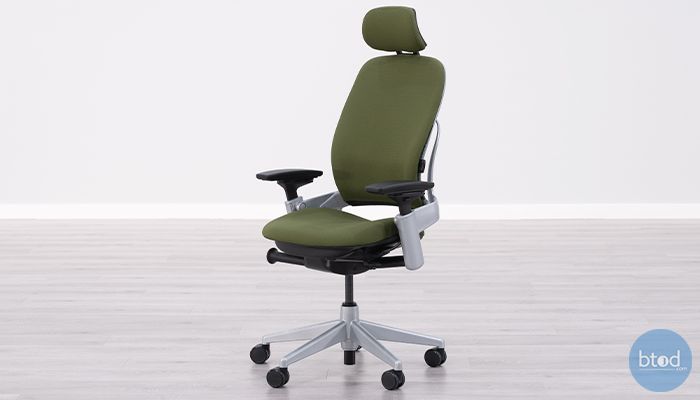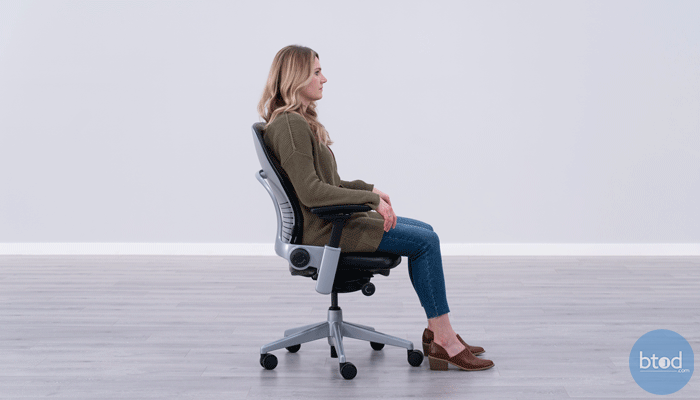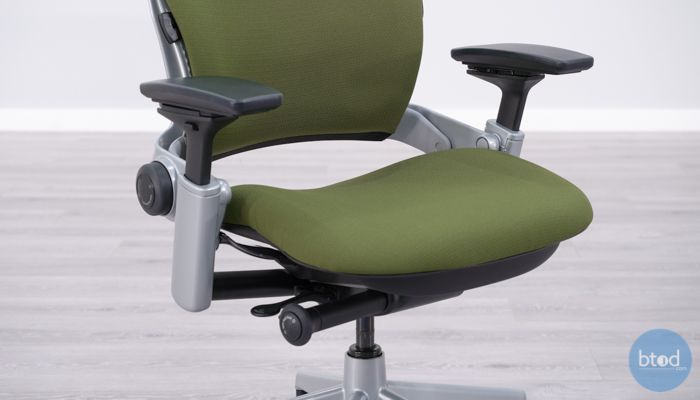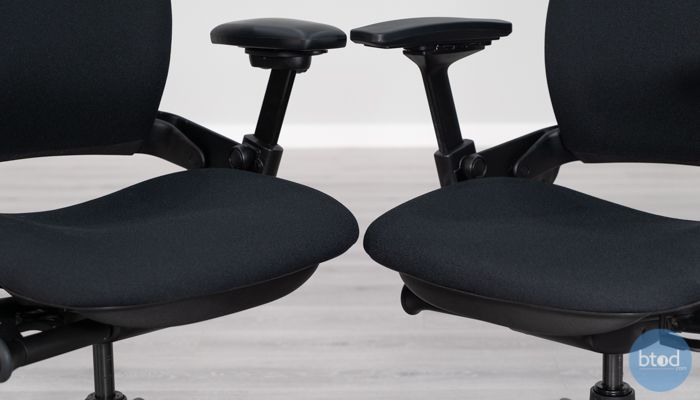Here at BTOD.com, we are huge fans of the Steelcase Leap v2 Chair. It has been our #1 ranked office chair for years and has tested very well in our office for seat, back, and armrest comfort.
With that being said, one thing we haven’t done a lot of is touching on the potential downsides of the chair and other deal breakers that may prevent someone from purchasing the chair. After selling, refurbishing, and using the Leap v2 for an extended number of years, we have a lot of personal experience and customer feedback as to why this chair may not be the right fit for some people.
Full Disclaimer: We are an office furniture dealer and sell some of the products we review. To learn more about the products we sell, our review process and why you can trust us, please visit: Why we’re different. Who is BTOD.com and The Learning Center?
Consider This Before Purchasing Leap v2 Links
If you’re looking for an office chair and it absolutely must have a headrest, then the Leap v2 may not be the right option for you. Be wary that adding a headrest to your Leap v2 is an expensive upgrade, it feels cheap, it doesn’t have a ton of adjustability, and the comfort doesn’t match the rest of the chair. Along with these reasons, the headrest also takes away from the movement that the backrest provides because it’s much more rigid and takes away from the flexibility that you have to move around freely.

Truth be told, the headrest on the Leap was an afterthought from Steelcase. The chair wasn’t designed with a headrest, which is probably why it doesn’t feel as comfortable as other Steelcase chairs like the Gesture, which had a headrest come out when the chair was designed. If you love Steelcase, but you have to have a headrest, we recommend the Steelcase Gesture. If you’re not brand loyal and are open to other brands, then you may just want to look for another brand entirely.
Another deal breaker for some interested in the buying the Leap v2 is the recline function. This is likely because consumers expect something different from the chair than what it actually provides. When sitting down in the chair, you’ll notice that the seat slides forward a little bit as you recline back and then slides forward as you lean forward. As this happens, the back of the seat doesn’t sink down a ton, it mostly just goes forward, meaning you’re not going to get a rocking motion. This is one thing that isn’t great about this chair for those who like to be in constant movement.

As a matter a fact, the overall motion of the recline on this chair is not as smooth as other reclines because there is a lot of plastic rubbing on plastic. It’s designed this way so that you can lean back and stay in one place without having to hold yourself in that position. It includes a little bit of catch or sticking points in the recline, which some think is a flaw in the chair, but this is the intended design. This chair is great if you’re someone who sits in a static position but if you like to recline, a chair like the Herman Miller Aeron may be better for you. The Aeron is designed to have a very smooth and fluid rocking motion with no sticking or catching on recline. Other chairs with smooth, rocking recline are the Haworth Zody, or Herman Miller Embody.
The Leap v2 tested very well in our office for back comfort and one of the biggest reasons for this is the lumbar support of the chair. It has a nice natural curve, you get a big height adjustment range, and you also get depth control so you can dial in exactly how much support you want.

The one potential downside of this is for users that don’t like lumbar support, as the support on this chair can be a bit aggressive. One thing we recommend trying if you don’t like aggressive lumbar support of this chair, is taking the lumbar support out altogether. The support itself is a just a plastic insert that goes between the fabric and back of the chair. Taking this insert out makes it a lot less pronounced, but you still get the natural curve of the backrest which provides ample support. If you’re someone who knows they don’t like aggressive lumbar support and doesn’t want to deal with removing the insert from the backrest, then it might be wise to look for a different chair.
It’s likely the main reason the Leap v2 isn’t the right fit for some users is the firm seat design. While some users found it to be firm, the seat on this chair still tested as one of the most comfortable in the office. It should only be a deal breaker for those looking for a thick, plush, padded seat.
There is a common misconception with high-end, ergonomic office chairs that when you spend a lot of money on a chair, it’s going to be equipped with a soft, plush seat, but that’s simply not the case with most high-end chair manufacturers. In fact, Herman Miller, Haworth, Knoll, and Steelcase have opted to design most of its chairs with firm seats, pointing to studies showing that firm seats are more ergonomic in the long run and for extended hours in one day.

One thing that can be said about the Leap for some, is that it can take a little bit of time for your body get acclimated to the new sitting experience. If you’re experiencing some soreness or numbness in your tailbone initially, it may be worth giving it a few weeks to see if it goes away. In our office, users have reported any initial discomfort going away after a couple of weeks, leading to the Leap becoming one of their favorite daily chairs.

Some people decide to alter the seat on this chair after discovering some discomfort. We highly advise against doing this because adding additional padding or foam won’t necessarily fix the problem and may introduce additional problems due to changing the ergonomics of the chair. Everything on the Leap was designed in a specific way, for a specific reason and that includes the seat pad. Things like specific shape, density, and different thicknesses throughout are designed intentionally, so if the seat is uncomfortable for you, it’s probably best to go with another model.
Conclusion
The Steelcase Leap v2 is highly rated by BTOD.com and recommended to customers on a regular basis, however it should be known that this chair isn’t made for everyone. It’s important to understand your wants, needs, likes, and dislikes when purchasing an expensive office chair. The Leap v2 is packed with features that give some users ergonomic comfort support on a regular basis and other users discomfort. Hopefully this blog gave you information so that you can make an informed decision when purchasing an office chair! If you have any questions, comments, or concerns, feel free to reach out to us at BTOD.com.






Tim McGrath
Is there always a gap between the back and the seat of the Leap V2. Is there any way to reduce or eliminate the gap?
Also, do you have any red upholstery in stock?
Thanks.